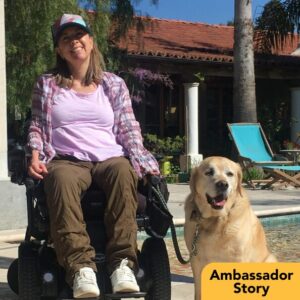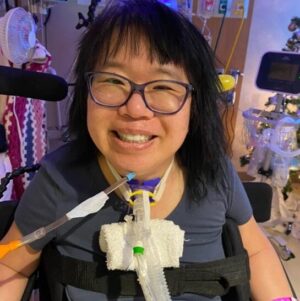Blood cancers like leukemia kill more children in America than any other disease. As part of the largest network of bone marrow donor centers in the United States, Delete Blood Cancer has registered more than 600,000 donors and provided over 2,000 bone marrow transplants to patients in need. We spoke to Desirée Chavis, the organization’s communications specialist, about making an impact through bone marrow donation.
What is Delete Blood Cancer’s mission?
We seek to register as many eligible and committed bone marrow donors in the U.S. as possible. We are also an international organization with a presence in 5 countries. Part of our mission is also to bust the myths surrounding donation and try to empower others to be advocates for donation themselves. We want people to know that it takes just 30 seconds to swab your cheeks and register as a potential donor. You could change or even save someone’s life!
What would you say if someone asked, why should I become a bone marrow donor?
- It’s an amazing and unique experience.
- Your bone marrow will replenish itself.
- Receiving bone marrow can be lifesaving for patients. Without a donor, many face extreme medical, financial and emotional hurdles–you are giving them a precious gift.
- Minorities and mixed race recipients can have a harder time finding a donor, so your contribution can really make a difference in their lives.

HelpHOPELive client Nick Karavite received a lifesaving bone marrow transplant.
What are some of the most common misconceptions about becoming a bone marrow donor?
The biggest misconception is around the methods of donation and the pain involved in donating. Whether you donate through the peripheral blood stem cell method (PBSC) or the surgical method, you’re back in action very quickly. They are both same-day outpatient procedures.
PBSC is used for 75% of donations. With this method, you receive a daily injection of filgrastim 4 days pre-donation to increase the number of blood stem cells in your body, so you may feel like you have the flu for a few days. During the several hour donation, a machine takes blood from one arm, removes the blood stem cells and returns the blood to the other arm. You can use your iPad, read magazines or watch TV while you donate.

A PBSC donation in progress.
Surgical donation is used in the other 25% of cases. In these cases, surgeons go in with a special syringe (to extract bone marrow) while you are under anesthesia. On average, it takes a little over an hour and you don’t feel anything during the procedure. You can still leave on the same day, making sure that you limit strenuous activity. Most donors describe feeling slightly tender or bruised at the injection site.
Has your work allowed you to hear stories from patients whose lives have been changed by donation?
Our main mission is to save lives; we encounter many rewarding moments while working toward that! Something amazing about our work is that a donor in any country we serve can fill the need for a patient outside of those borders. Up to one year (or two in some places) after transplant, a donor and recipient cannot have direct contact, but after that, if the desire is mutual, they can begin direct contact with each other and even plan to meet.
I remember one incredible story about a recipient in Texas, Larry, and his donor in Germany, Johann. A year after Larry’s transplant, Johann came to visit him in Texas! Larry brought up an amazing point: he and Johann now share DNA. They were basically “brothers” because of Johann’s decision to donate. Larry was so excited to meet him, and Johann was welcomed into a new family. He gained that family by saving a life.

Larry and Johann were linked by Johann’s lifesaving donation. Source: Houston Chronicle
Go to deletebloodcancer.org to register to be a donor now. Share your donation or bone marrow transplant stories with us on Facebook and on Twitter!











